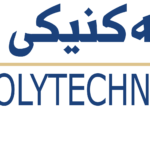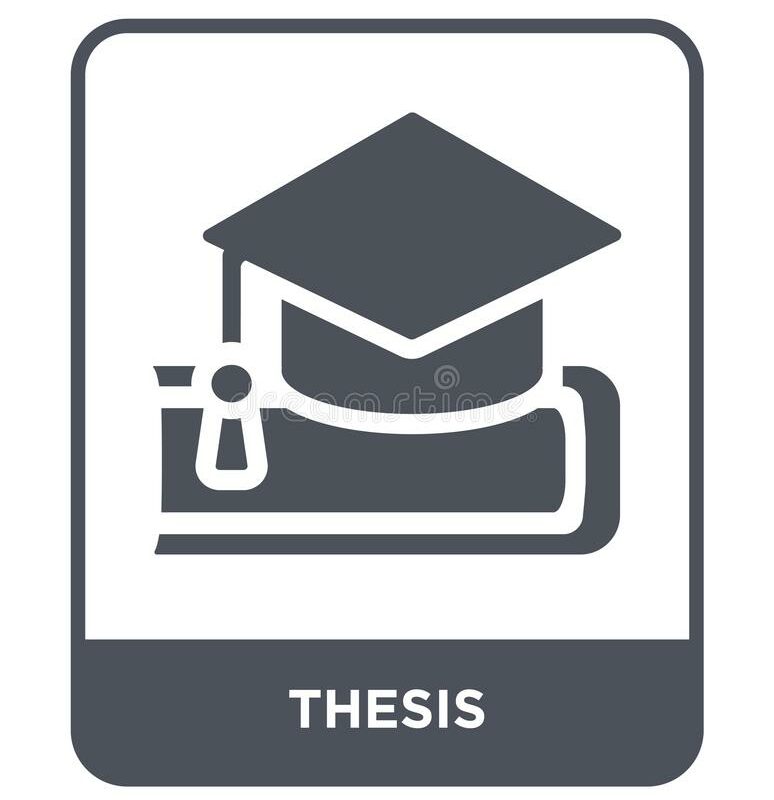- Azad Abdullah Ameen
- [email protected]
- +9647721068874
-
The objective of this study is to delineate the challenges associated with addressing complex optimization issues, with a specific focus on metaheuristic algorithms. A comprehensive investigation was undertaken to explore the principles and categories of these algorithms, gain a deeper understanding of the issues they present, and develop effective strategies to overcome them. To challenge these issues, the study explores metaheuristic algorithms, which are known for their effectiveness in solving such problems. However, these algorithms often struggle with getting stuck in local optima and maintaining a balance between exploration and exploitation. Additionally, they exhibit poor searchability and exploitation performance.
To address these challenges, this research work introduces three different algorithms: a modified version of child drawing development optimization MCDDO, a hybrid algorithm combining child drawing development optimization with harmony search CDDO-HS, and a novel metaheuristic called the social psychology interaction behavior algorithm SPIBA, inspired by human social psychology interactions.
The performance of these algorithms is evaluated using various benchmark test functions, including classical and CEC-C06 2019 benchmark functions. Statistical methods, such as ranking and the Wilcoxon rank-sum test, are used to compare the results of these algorithms with the original algorithms, CDDO, HS, and other popular algorithms.
In the beginning, two different approaches were proposed, namely MCDDO and CDDO-HS. The main objective of both techniques is to overcome the issues that the CDDO faces. The CDDO is an example of a human-based metaheuristic approach that may encounter challenges such as getting trapped in local optima, demonstrating suboptimal performance in the exploration phase, and experiencing stagnation in the nearest optimal solution.
The first proposed MCDDO incorporates four key mechanisms: iterative pattern memory PM updating during the exploitation phase, where new experiences are compared with the child's current drawings; a change in the primary rule employed during the exploitation phase; parameter tuning to strike a balance between exploration and exploitation phases; and preservation of the best solution obtained in each iteration and comparing new solutions with the best solution during the exploration phase. Following the completion of the evaluation, the statistical findings indicate a consistent superiority of the proposed approach over standard algorithms, as evident in both average and p-value results. Specifically, out of the nineteen classical test functions and ten CEC-2019 benchmark test functions, the proposed approach demonstrated better performance in thirteen and nine instances, respectively. These results were then compared with those obtained from the JAYA, SCA, ChOA, DA, GPSO, and BOA algorithms. The comparative analysis confirmed that the proposed approach outperformed all other metaheuristic algorithms in four out of the ten CEC-2019 benchmark test functions.
The second proposed method, CDDO-HS, represents a hybridization between CDDO and HS and integrates two crucial mechanisms. Firstly, it relocates the PM to the algorithm's core, updating it with each iteration using the HS algorithm. Secondly, it establishes the PM size at 80% of the overall population, aiming for optimal exploration. After the evaluation, the statistical results reveal that the hybridization approach consistently outperforms standard algorithms in both average and p-value outcomes. Specifically, in comparison with CDDO, it achieves better results in eleven out of nineteen classical test functions and all functions from the CEC-2019 benchmark. When compared with HS, the hybrid approach excels in sixteen out of nineteen classical test functions and seven out of ten CEC-2019 benchmark test functions. These results were then pitted against the ChOA, BOA, FOX, GWO-WOA, WOA-BAT, and DCSO algorithms. The study proved beyond a reasonable doubt that the suggested method is better than all other metaheuristic algorithms in six of the ten CEC-2019 test functions.
In the subsequent phase, SPIBA, an innovative metaheuristic optimization algorithm inspired by social psychology, interaction behavior, and social interaction—processes involving the stimulus or response of two or more individuals—was developed. These fundamental ideas have been easily incorporated into SPIBA's core, which operates as a single-object and population-based algorithm. SPIBA's performance was compared to that of the ChOA, BOA, FOX, GWO-WOA, WOA-BAT, and DCSO algorithms. The exploration and convergence measures were utilized to assess its success. Their analytical results definitively indicated that the proposed approach beat all other metaheuristic algorithms in six of the ten CEC-2019 benchmark test functions.
Additionally, SPIBA was applied to equipment, real-world engineering, and applied science challenges, specifically pressure vessel design and the analysis of the pathological IgG fraction in the nervous system. When working in pressure vessel design and compared with eight other algorithms—WOA, GWO, FDO, CFDO, WOAGWO, KMGWO, RFSO, and MFDO—SPIBA appeared as the top-performing algorithm. It showed an average solution quality of 6.01E-05 and the lowest standard deviation of 2.00E-04, guaranteeing the top position. In the context of the "Nervous System's Pathological IgG Fraction" application problem, a comparison between SPIBA and Leo revealed a significant improvement in the proposed algorithm's performance.
- Erbil Technical Engineering College
- Information Systems Engineering
- AI - Optimization
- Diyar Yousuf mirza
- [email protected]
- +9647504454348
- DYAR YUSIF MRZA
-
تهدف الدراسة الحالية إلى إبراز الدور الذي تمارسه ادارة المعرفة في أخلاقيات الوظيفة من خلال تبني أبعاد ادارة المعرفة المتمثلة ب (توليد المعرفة واكتسابها، تنظيم المعرفة وتخزينها، مشاركة المعرفة ونشرها، تطبيق المعرفة) والتي تعد ركيزة أساسية لأية منظمة تسعى إلى تفاعل زبائنها الداخليين والخارجيين، كونها تعد وسيلة مهمة لتحقيق التميز بمختلف عناصرها، فضلا عن كونها نهجا إستراتيجيا لمشاركة العاملين فيما بينهم.
وتعتبر أخلاقيات الوظيفة موضوعا حيويا في ساحة الأعمال والمنظمات، حيث تسهم في بناء مجتمعات وأماكن عمل صحية ومزدهرة. تزايدت أهمية الأخلاقيات في الوظيفة مع تطور التكنولوجيا وانتشار الاقتصاد المعرفي، حيث أصبح من الضروري التفكير في كيفية تطبيق مبادئ الأخلاقيات في سياقات تتسم بالتعقيد والديناميكيات الجديدة تتناول هذه الرسالة دراسة "إدارة المعرفة" وكيفية تأثيرها على أخلاقيات الوظيفة.
ان الممارسات الغير اخلاقية في إدارة المعرفة تشير إلى استخدام أو تداول المعرفة بطرق غير أخلاقية أو غير قانونية، مثل سرقة الملكية الفكرية، أو تسريب المعلومات السرية. يتمحور التساؤل الرئيسي للرسالة حول كيفية تأثير هذه الظاهرة على أخلاقيات الوظيفة في مختلف القطاعات والمنظمات ، باستخدام منهجية بحثية شاملة، تم جمع البيانات وتحليلها من خلال مراجعة أدبية بالاعتماد على الأسلوب التحليلي في الجانب العملي، إذ تم جمع المعلومات والبيانات عن طريق استمارة الاستبانة بأستخدام جوجل فورم كأداة رئيسة للحصول على البيانات والمعلومات والتي اعدت لهذا الغرض. وتم تشخيص المتغيرات الرئيسية والمتغيرات الفرعية وقياسها.
وعليه سعى الباحث إلى الانطلاق من مشكلة رئيسية والتي تم التعبير عنها بعدد من التساؤلات الفكرية والميدانية من خلال تشخيص واقع وزارة التعليم العالي والبحث العلمي ومدى امتلاكها للمتغيرات الدراسة الحالية بأبعادها محاولا التعرف على العلاقة والتأثير ما بين متغيرات الدراسة والفروقات المعنوية بينهما ودراستها من خلال الإجابة على تساؤلات الدراسة. وللإجابة على تساؤلات مشكلة الدراسة كون هذه المتغيرات من المواضيع الحديثة والمهمة في بيئة أقليم كوردستان العراق، تمت صياغة مخطط فرضى يعكس طبيعة العلاقة بين المتغيرات الرئيسية ونوع التأثير في الوزارة المبحوثة، إذ تم الاعتماد على مجموعة من الفرضيات واختبارها باستخدام الوسائل الإحصائية وفق برنامج (SPSS- 26)، وتم تحكيم استمارة الاستبانة من قبل عدد من السادة المحكمين في حقل الاختصاص، وتم توزيع (216) إستمارة من خلال نظام جوجل فورم ، ( 207 ) استمارة صالحة للتحليل وبنسبة إستجابة (95.8%).
وبعد تفريغ البيانات وتحليلها تم تشخيص الحقائق الميدانية للمنظمة المبحوثة مجتمع الدراسة والعينة المبحوثة وتوصلت إلى مجموعة من الاستنتاجات من أهمها: تبين أن إدارة المعرفة تمثل نهجاً تحليلياً يسمح للمنظمات بأن تكون أكثر قابلية للتكيف مع احتياجات التغيير البيئي، مما يسمح باستثمار الفرص الأكثر جاذبية والحصول على قيمة أكبر لخدمة المستفيدين منها، وان الوعي بأخلاقيات المعرفة له دور كبير في توجيه الموظفين والمديرين لاتخاذ قرارات أخلاقية تتعلق بالمعرفة والمعلومات، كما بينت نتائج الدراسة وجود علاقة إيجابية وقوية بين أخلاقيات الوظيفة وإدارة المعرفة، وان الاهتمام بعملية مشاركة المعرفة أو نشرها أو تطبيقها يكون له تأثير أيجابي على السلوك الأخلاقي فيما يتعلق بالنزاهة والأمانة، ويؤثر توليد المعرفة واكتسابها إيجابيا على النزاهة والأمانة في مكان العمل، وان تركيز الاهتمام على تخزين المعرفة وتنظيمها ومشاركتها ونشرها وتطبيقها يكون له تأثير ايجابي على السلوك الأخلاقي.
واعتماداً على الاستنتاجات التي توصلت إليها الدراسة حددت عدة مقترحات ومن أهمها :
- الوزارة كميدان الدراسة عليها ان تحاول أولا كسر الحواجز بين الوظائف التقليدية المختلفة من خلال إعادة التنظيم الداخلي للموارد والمهارات الفردية ومن ثم تطوير مؤشرات الأداء الرئيسية القدرات إدارة المعرفة.
- على الوزارة مجتمع الدراسة عليها زيادة وقياس مستويات المعرفة التنظيمية لدى عامليها وخاصة قياداتها الإدارية العليا ، لملء الفجوة بين الواقع والمخطط وبالتالي انعكاس الرؤيا الواضحة لإدارة المعرفة في نشر أخلاقيات الوظيفة في السلوك المتبع من قبل عامليها .
الكلمات الافتتاحية : إدارة المعرفة ، أخلاقيات الوظيفة ، النزاهة والأمانة ، تخزين وتنظيم المعرفة، تطبيق المعرفة ، وزارة التعليم العالي والبحث العلمي أقليم كوردستان العراق .
- Erbil Technical Administrative College
- Business Administration - کارگێڕی کار
- Administration
- Hoshang Hayder Anwer
- [email protected]
- +9647504259106
- Hoshang Hayder Anwer (MSc THESIS) 20-2-2024
-
ABSTRACT
Reinforced concrete (RC) beams characterized by circular openings present inherent structural challenges, resulting in a compromise of their load-bearing capacity and overall structural integrity. This thesis endeavors to confront and resolve this issue through the implementation of an innovative approach involving Near Surface Mounting (NSM) steel bars. Circular openings, integral to architectural designs, frequently engender a diminution in the strength of beams. This study investigated the effectiveness of utilizing near-surface mounted (NSM) steel bars to restore the shear strength of deep beams and the presence of openings in slender beams. The experimental work involved testing fourteen simply supported reinforced concrete beams. These beams were divided into two groups, each consisting of beams with different shear span-to-depth ratios (a/h = 1.5 and 3.65). Two specimens served as control samples, while the remaining beams had openings located at various positions. The openings were categorized as large or small, with opening height ratios (ho/h) of 0.4 and 0.2, respectively. In the second group, six specimens were strengthened using near-surface mounted (NSM) steel bars arranged in three different stirrup configurations: (square, diamond, and parallelogram). All the beams had a cross-section of 100 mm × 200 mm and a total length of 2000 mm. The variables examined in the tests included the sizes and locations of the openings, the diameter of the bars, and the arrangement of the strengthening bars around the openings. The test results revealed that the presence of openings in the beams led to a reduction in the ultimate load. For specimens with large circular openings in the deep beam's shear zone, large circular openings in the slender beam subjected to shear, large circular openings subjected to shear and flexural loads, and small openings in the slender beam subjected to shear and flexural loads, the ultimate load decreased by approximately 45%, 18.7%, 14.6%, and 19.5%, respectively. Additionally, the test results showed that specimens strengthened with diamond stirrup bars exhibited an improvement in the ultimate load of up to 33.1%. Meanwhile, specimens strengthened with square and parallelogram stirrup bars demonstrated improvements of up to 21.5% and 26.5%, respectively. Changing the bar diameter had a slight effect on increasing the ultimate load, specifically for the parallelogram and square schemes, resulting in an increase of approximately 10% and 7%, respectively.
- Erbil Technical Engineering College
- Civil Engineering Department.
- Structural Engineering.
- Kosrat Dlshad Ahmed
- [email protected]
- +9647506307788
- Bone Fracture - Thesis_compressed
-
Computers have demonstrated their significance in all areas of human existence, including financial services, e-commerce, communication, education, research, innovation, and healthcare. The use of computers to make medical diagnoses has expanded rapidly in recent years. An efficient approach that uses modern technology while requiring fewer man-hours and materials to provide accurate diagnoses. While diagnosing an injury to a human body, doctors often obtain X-ray images of the affected area.
Numerous advanced technological tools have been created to aid doctors and medical facilities in enhancing patient care. The conventional X-ray scanners, known for generating unclear images of bone structures, pose a risk of inaccurate diagnoses of bone fractures when employed by surgeons.
The approach detailed in this research outlines a thorough procedure aimed at improving the precision of image examination within the realm of diagnosing medical conditions using X-ray images. Real-life medical data often suffers from noise, inconsistency, and incompleteness, necessitating robust preprocessing. The initial step involves applying a Gaussian filter to the X-ray images for noise elimination, followed by the utilization of adaptive histogram equalization to improve contrast. Edge detection is then conducted using the Canny technique, integrating adaptive histogram equalization to enhance contrast quality.
The process of feature extraction utilizes the Gray-Level Co-occurrence Matrix (GLCM) for textural feature extractions, yielding a set of 100 features for each image. To classify bone fractures, a range of machine learning algorithms (Decision Tree, Naïve Bayes, k-Nearest Neighbors, Random Forest, and Support Vector Machine) along with deep learning algorithms, such as Convolutional Neural Network (CNN) and transfer learning via VGG-16, are employed to improve overall performance.
As an additional point, the outlined approaches were applied for bone fracture detection using both national and international datasets. In this particular case, 80% of the dataset was employed for training, while the remaining 20% was allocated for testing. The research assessed the effectiveness of diverse algorithms, including Naïve Bayes, Decision Tree, Nearest Neighbors, Random Forest, SVM, and CNN, resulting in accuracy scores spanning from 0.64 to 0.96. Among these, statistically, the highest accuracies were observed in SVM, Random Forest, and CNN in this thesis.
- Erbil Technical Engineering College
- Information Systems Engineering
- Machine Learning



